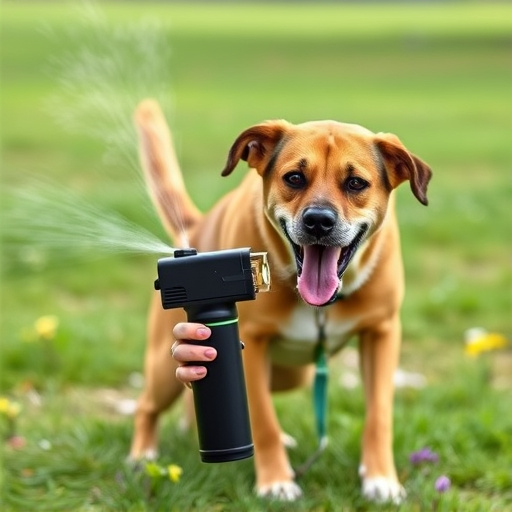Canine pepper spray, with higher capsaicin concentrations, temporarily disables dogs during emergency or aggressive encounters, allowing first responders to assess situations and offer care. Proper emergency care for maced animals involves immediate transportation to a calm environment, eye rinsing with warm water for 15 minutes, temperature regulation, and veterinary consultation. Its use by animal rescue teams is legal but regulated, and it should be the last resort after exhausting non-lethal methods.
“Canine pepper spray, a powerful tool used by law enforcement, has raised concerns about its impact on dogs. This article explores police-grade pepper spray and its effects on our four-legged friends. We delve into the composition and effectiveness of this controversial substance, offering insights into its immediate and long-term consequences for exposed animals. Additionally, we provide emergency care guidelines for animal rescuers and discuss legal considerations to ensure responsible usage in critical situations, emphasizing the importance of understanding and preparing for such incidents.”
- Understanding Canine Pepper Spray: Composition and Effectiveness
- Emergency Care for Dogs Exposed to Police-Grade Pepper Spray
- Legal Considerations and Best Practices for Use in Animal Rescue
Understanding Canine Pepper Spray: Composition and Effectiveness
Canine pepper spray, designed for police and security purposes, is a specialized product formulated to incapacitate dogs temporarily without causing permanent harm. Its composition differs from traditional human pepper sprays, often containing higher concentrations of capsaicin, the active ingredient responsible for the burning sensation. This chemical irritates the dog’s eyes, nose, and respiratory tract, leading to temporary disorientation and immobilization.
The effectiveness of canine pepper spray lies in its ability to disrupt a dog’s normal behavior patterns during an emergency or aggressive encounter. When deployed, it creates a safe window for first responders to assess the situation, provide emergency care for maced animals, and de-escalate potential risks. The spray’s fast-acting properties ensure that dogs are neutralized quickly, allowing for swift resolution and minimizing any adverse effects on both the animal and human involved.
Emergency Care for Dogs Exposed to Police-Grade Pepper Spray
When a dog is exposed to police-grade pepper spray, emergency care is crucial to mitigate the effects and ensure their safety. The first step is to immediately move the affected animal to a safe, calm environment, as the spray’s irritant can exacerbate panic or stress. Rinse the dog’s eyes gently with warm water for at least 15 minutes to flush out any residual pepper spray, being careful not to induce coughing or further irritation.
Emergency care also involves monitoring vital signs and providing supportive treatment. This includes administering oxygen if needed, as pepper spray can cause respiratory distress. Keep the dog warm, as exposure to cold temperatures can exacerbate the effects of the spray. Additionally, contact a veterinarian promptly for guidance on managing pain, potential skin damage, or any long-term health impacts associated with exposure to police-grade pepper spray.
Legal Considerations and Best Practices for Use in Animal Rescue
In many jurisdictions, the use of canine pepper spray by animal rescue teams is a complex legal matter that requires careful consideration. While it can be a powerful tool for subduing aggressive dogs during emergency care for maced animals, there are stringent regulations in place to ensure its responsible utilization. Rescue workers must be thoroughly trained and aware of the legal implications, as misuse could lead to serious consequences, including liability and animal cruelty charges.
Best practices dictate that pepper spray should only be employed as a last resort when other de-escalation techniques have failed. Animal rescue teams should prioritize non-lethal methods first, such as positive reinforcement, distraction, or creating distance from the dog. The decision to use pepper spray should involve a thorough assessment of the situation, taking into account the dog’s behavior, the safety of the rescuers and any nearby individuals or animals, and the potential impact on the animal’s well-being post-incident.
Canine pepper spray, specifically designed for police use, presents unique challenges when animals are exposed. Understanding its composition and effectiveness is crucial for providing immediate Emergency Care for Mace’d Animals. Legal considerations and best practices should guide its use in animal rescue, ensuring a balanced approach to public safety and animal welfare. By adhering to these guidelines, we can navigate the complexities of police-grade pepper spray and offer the necessary support to affected animals.
